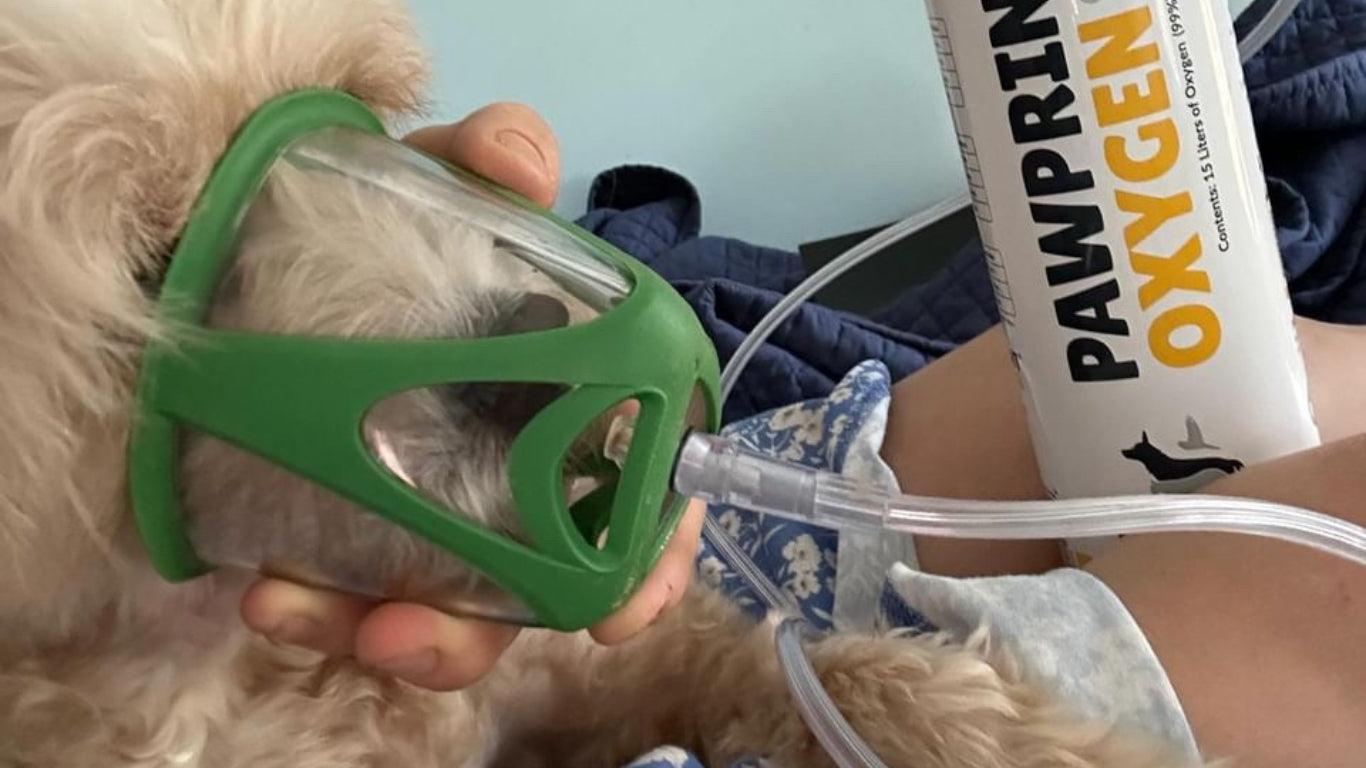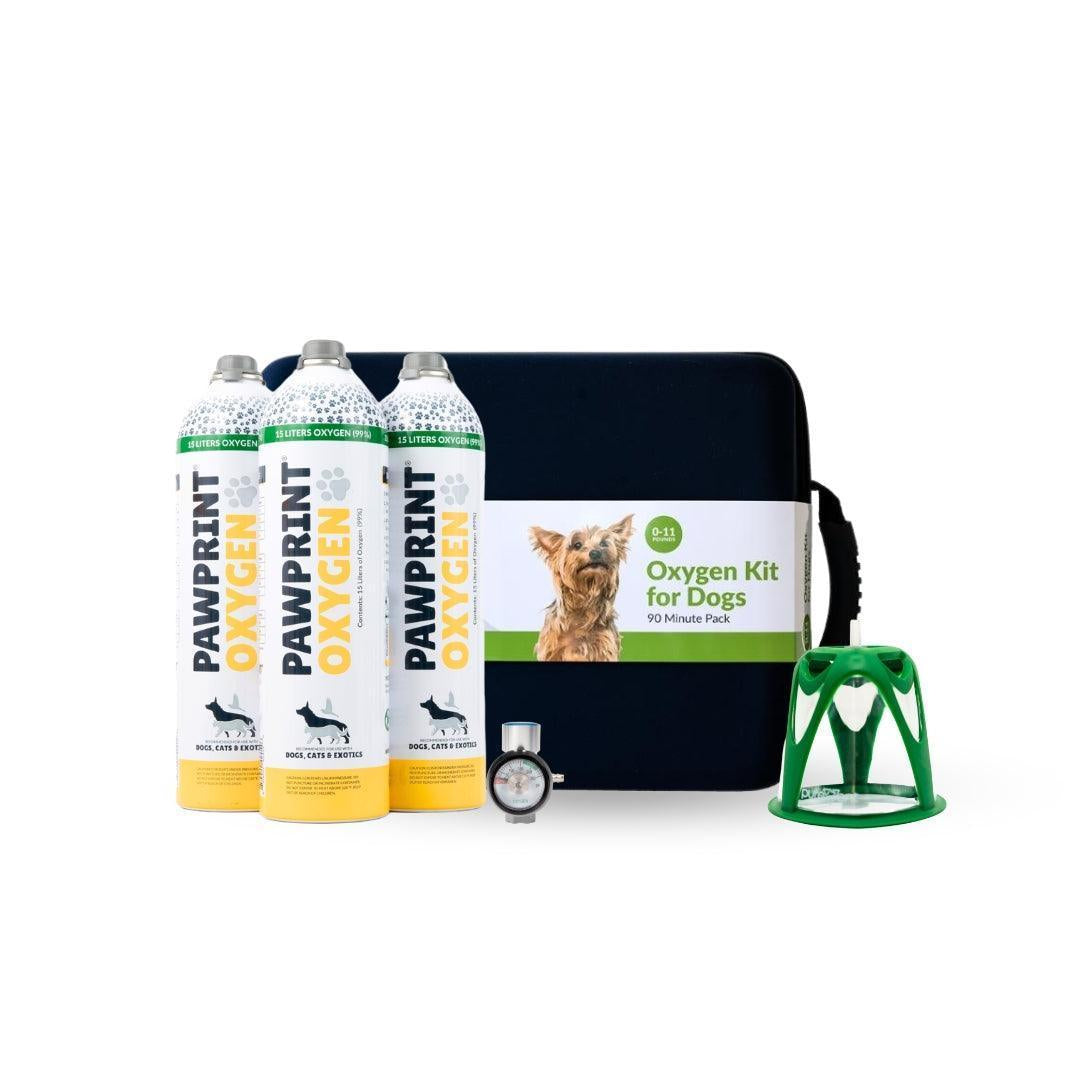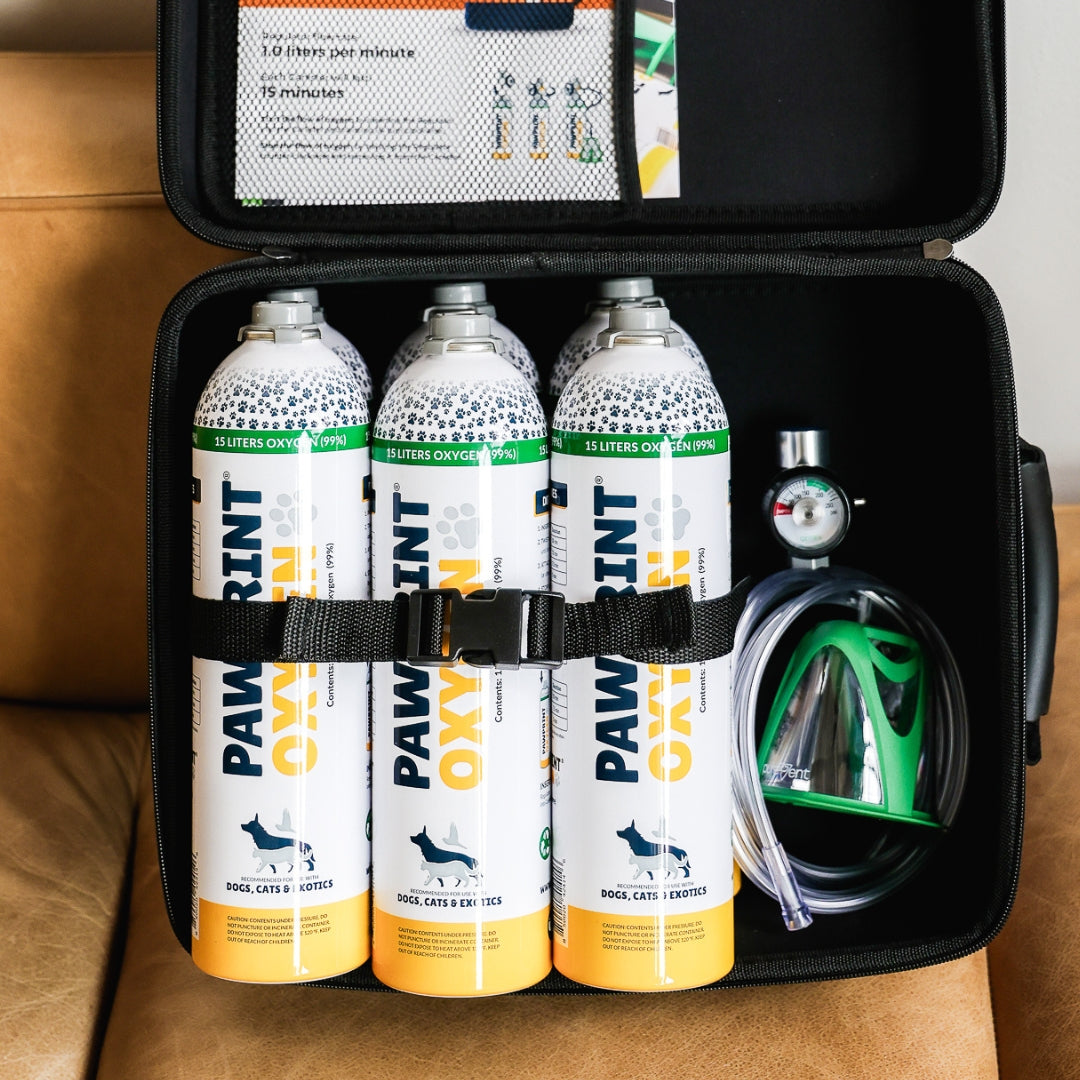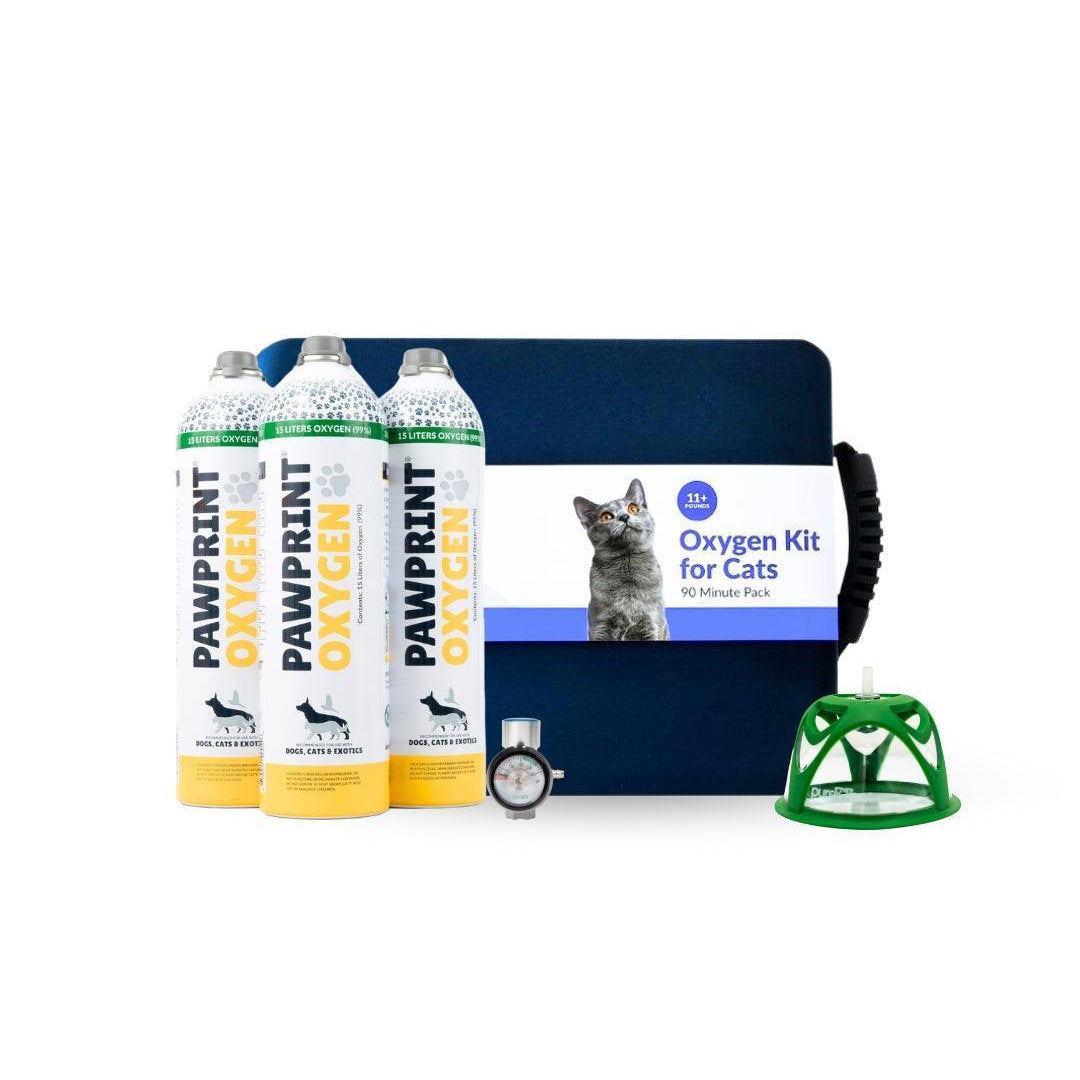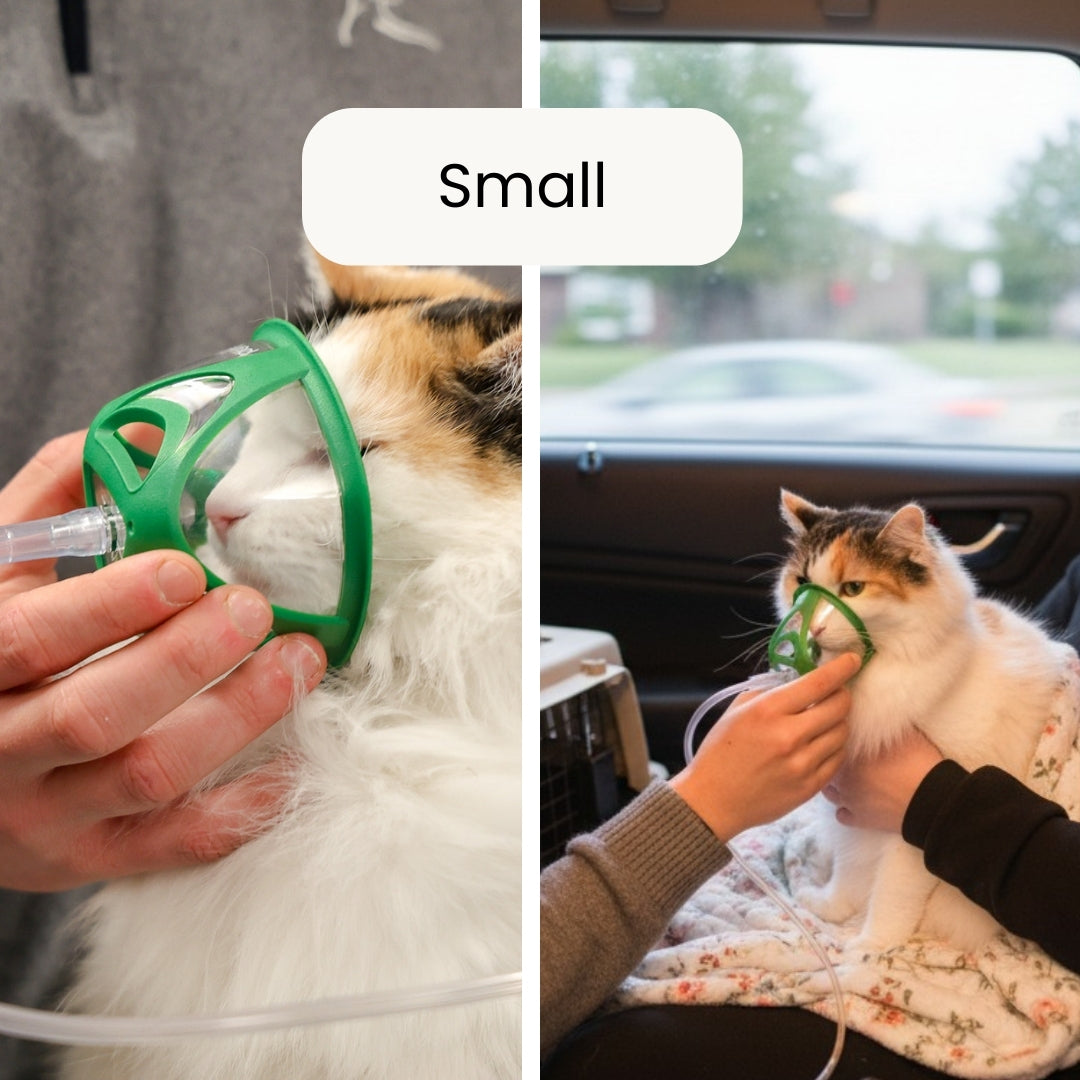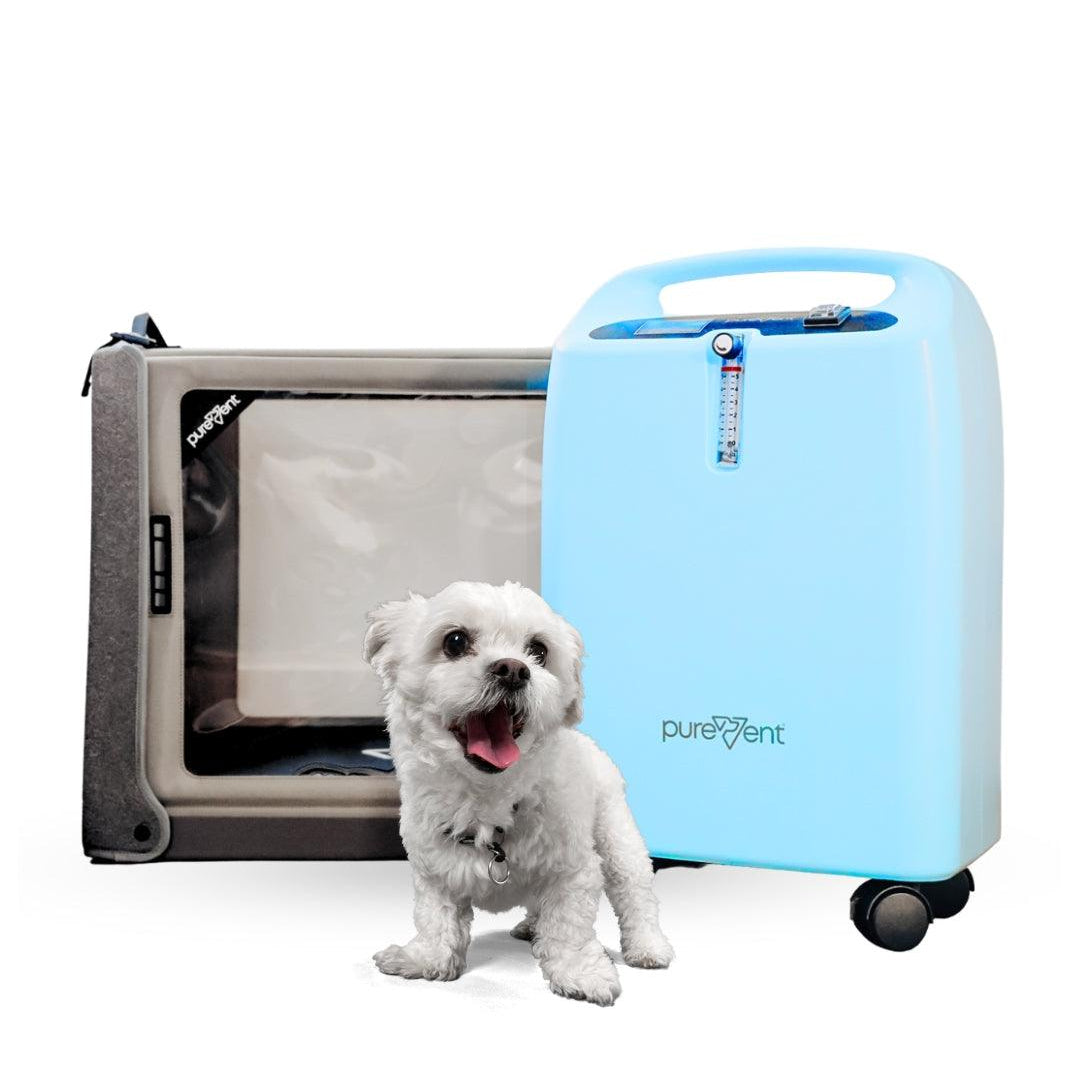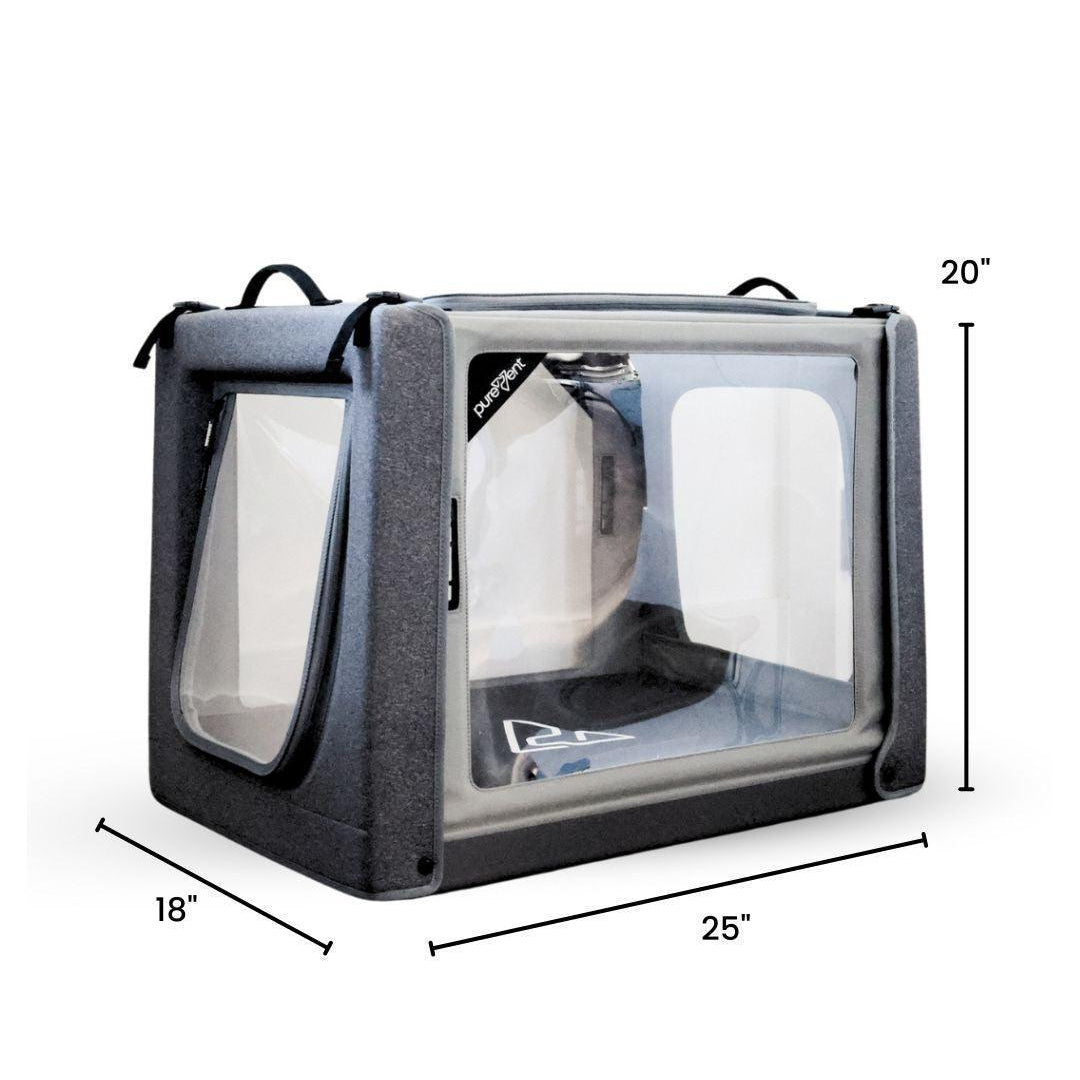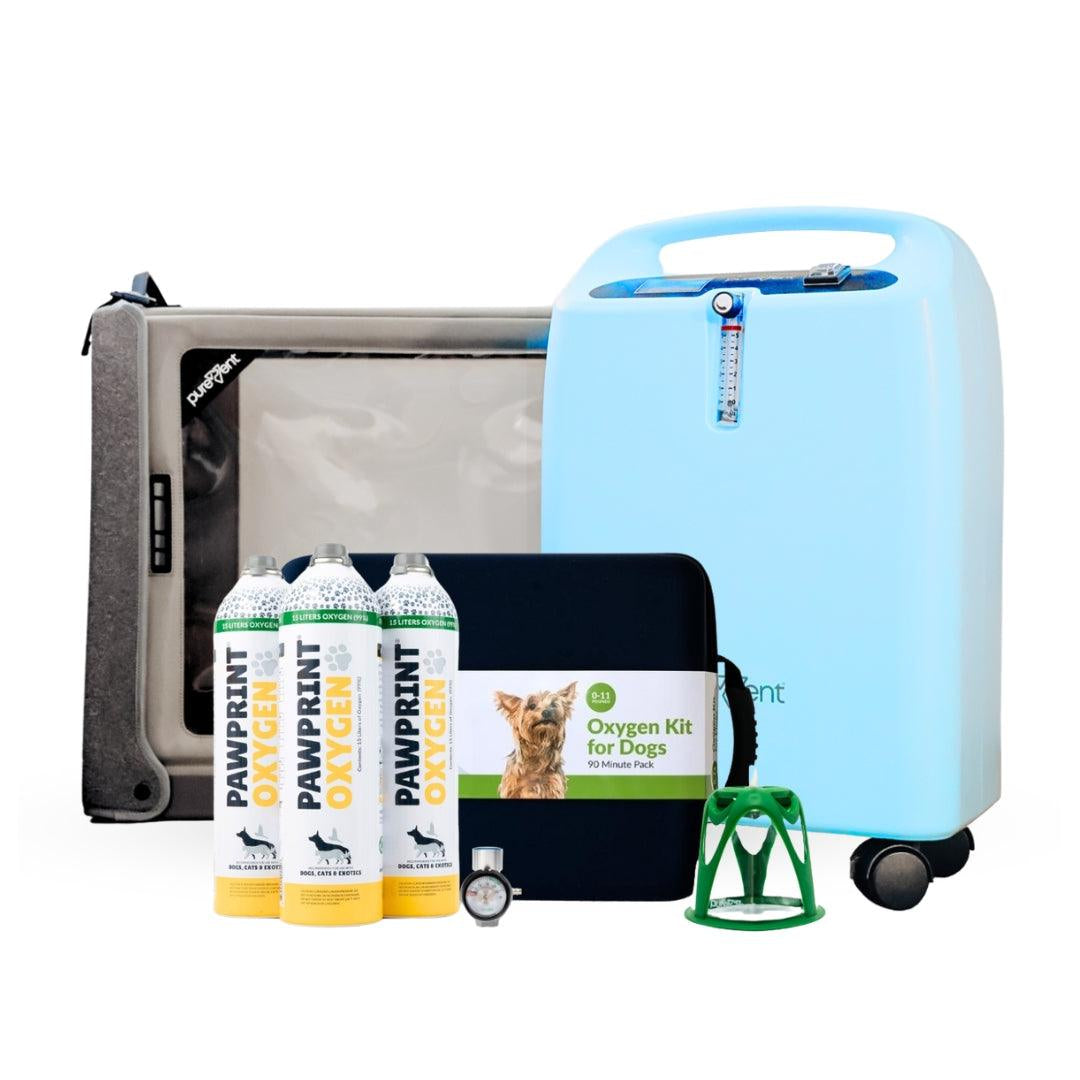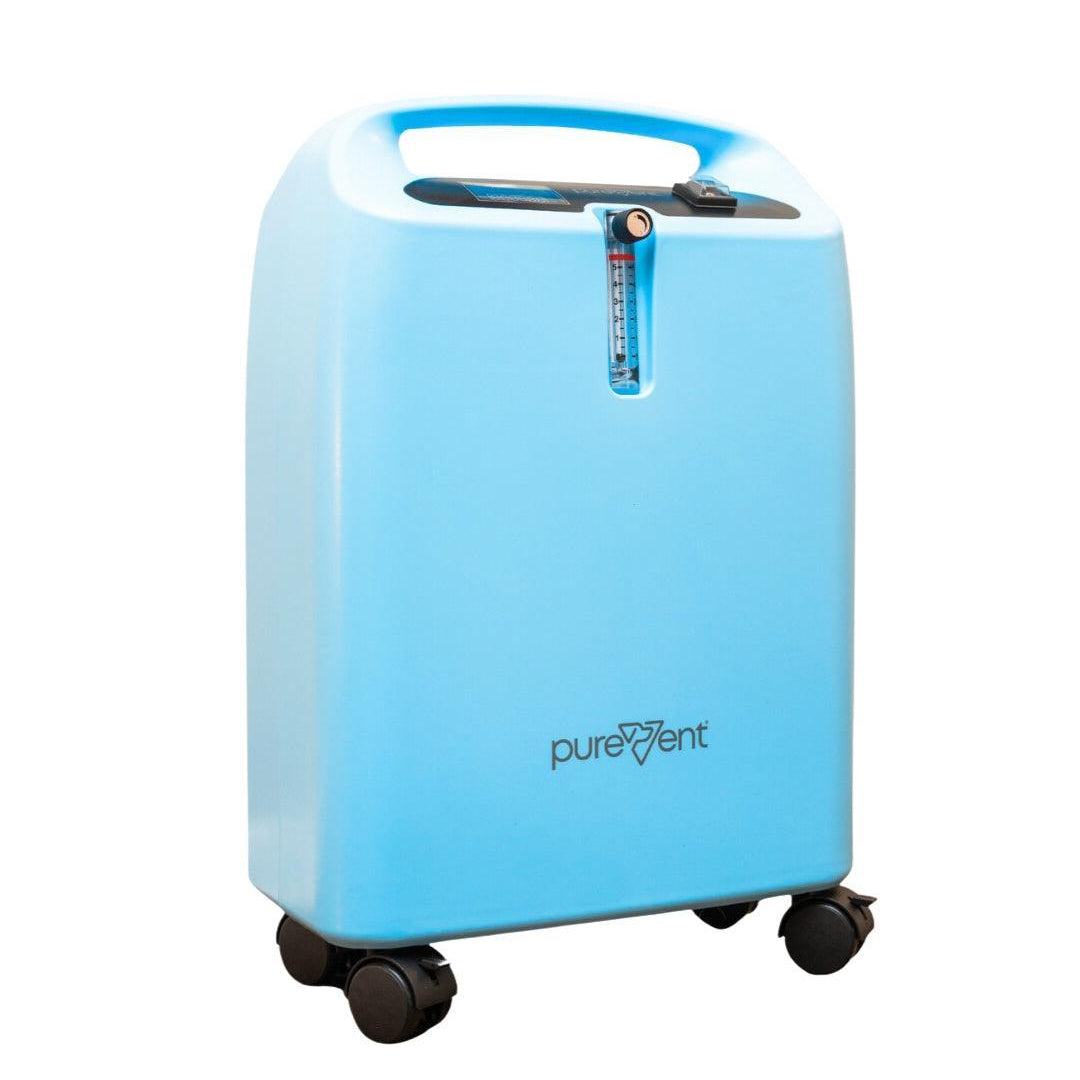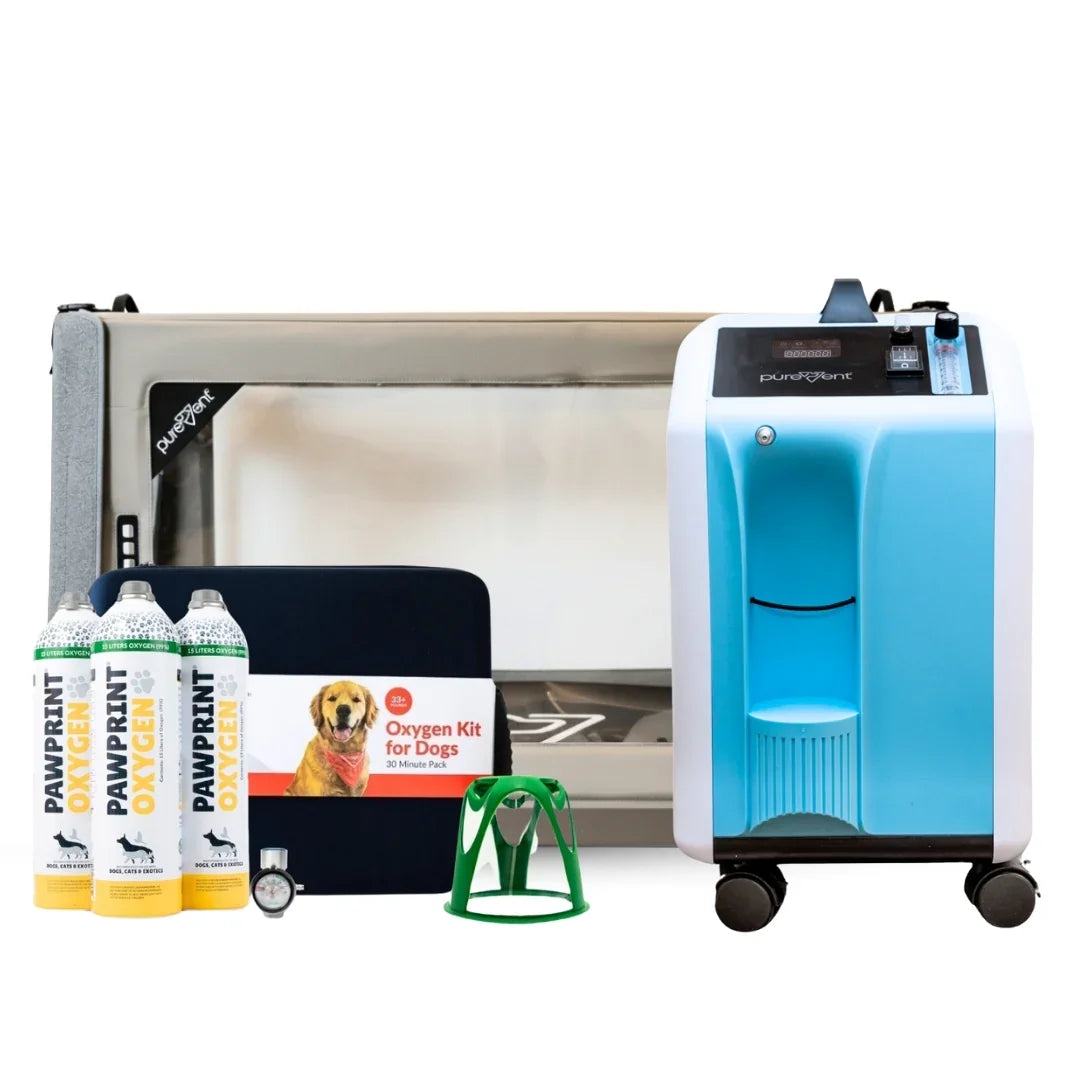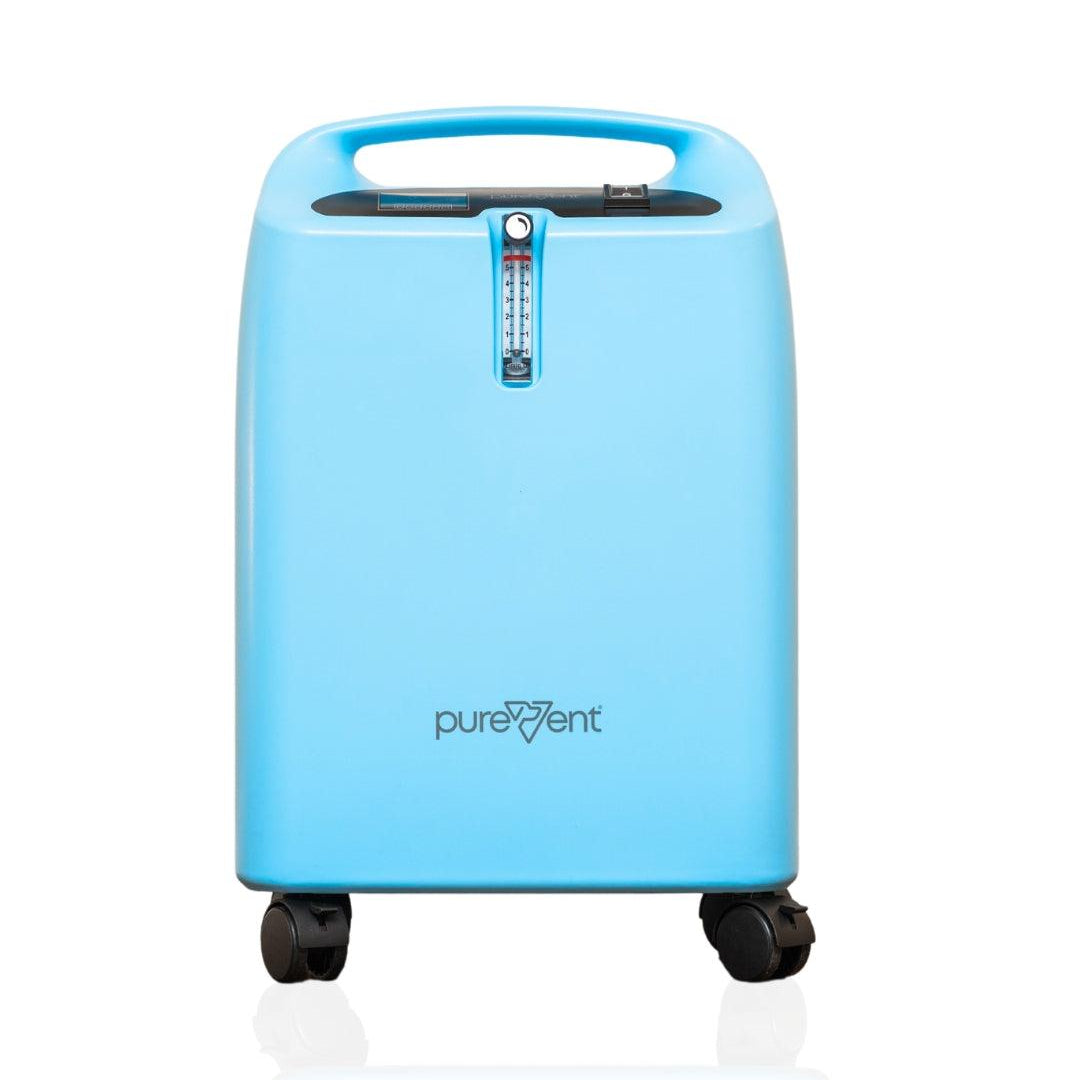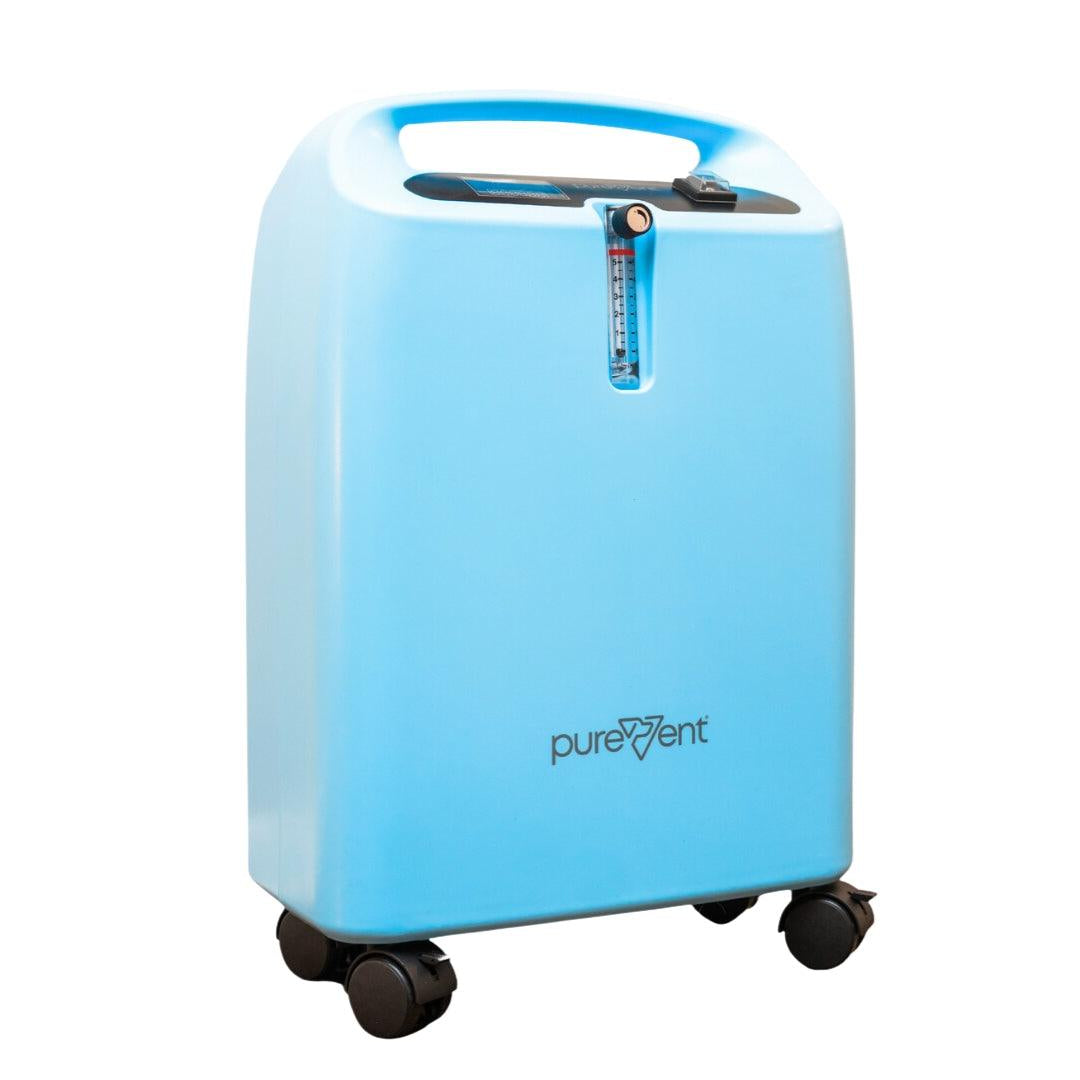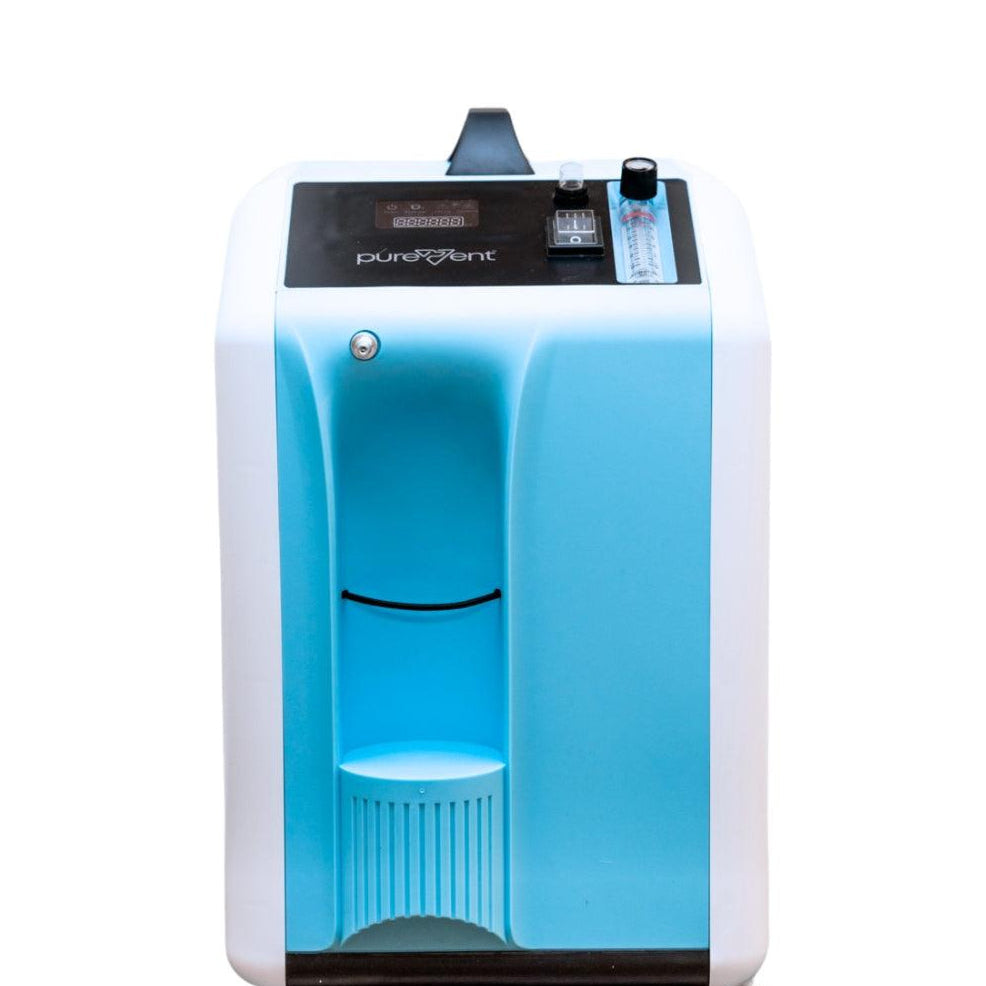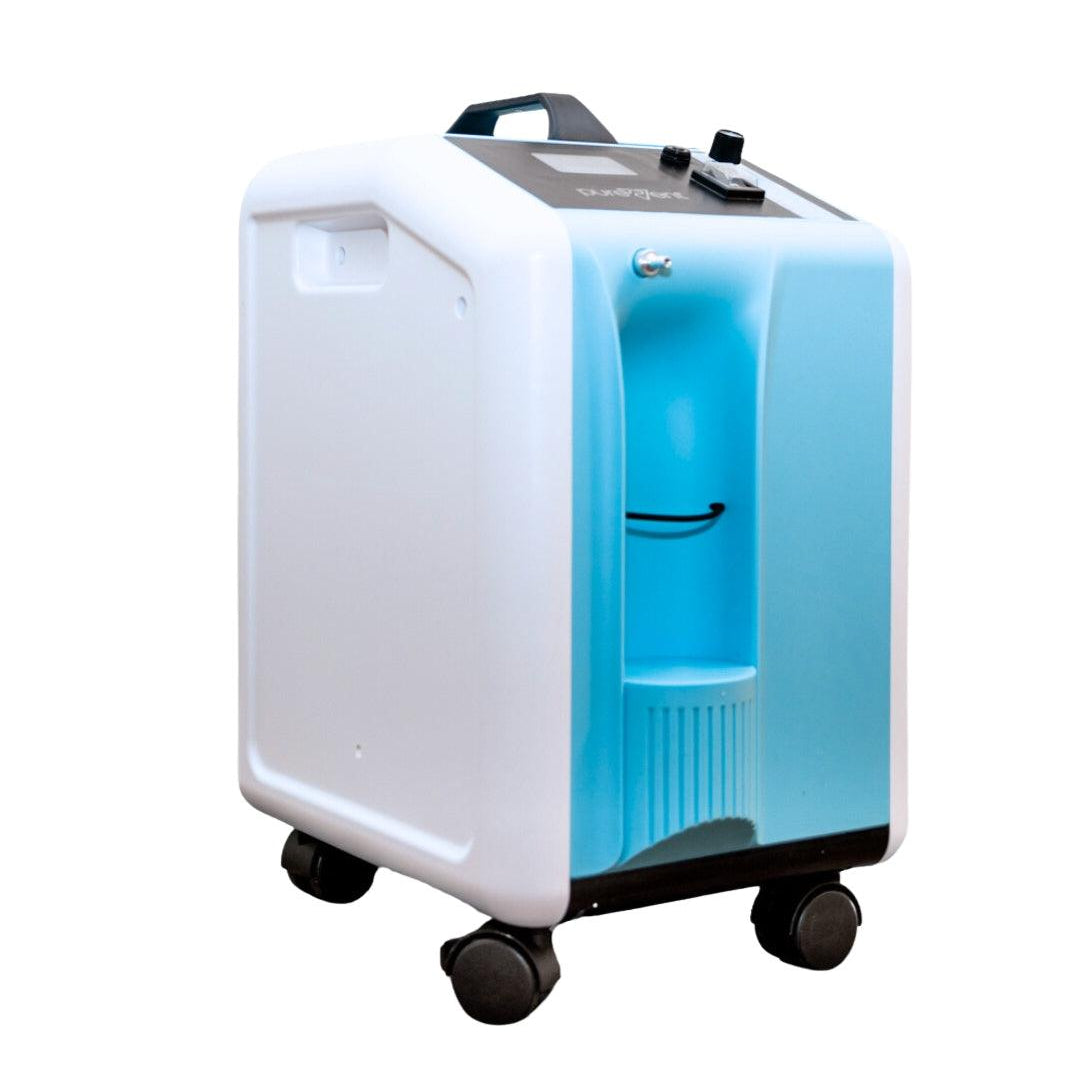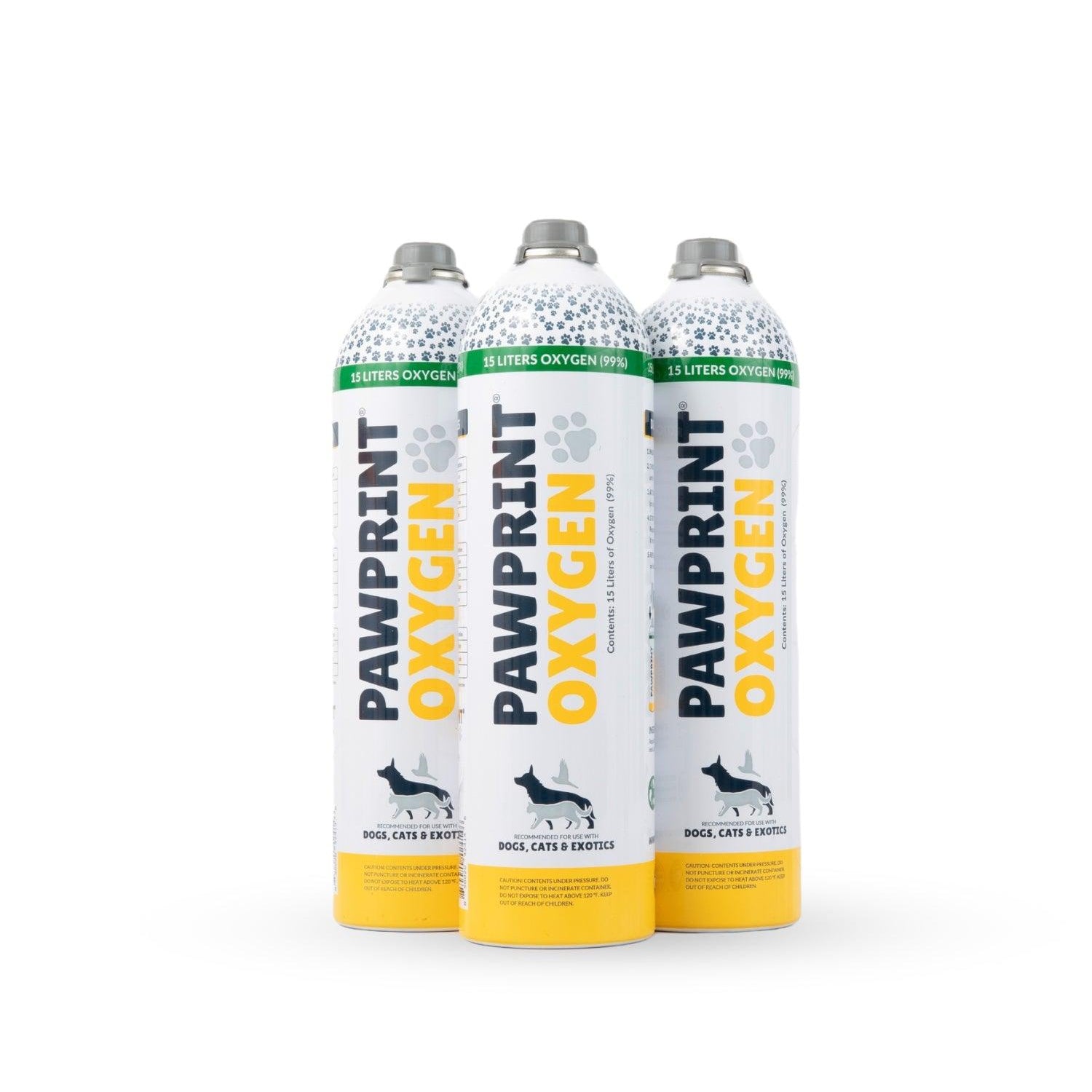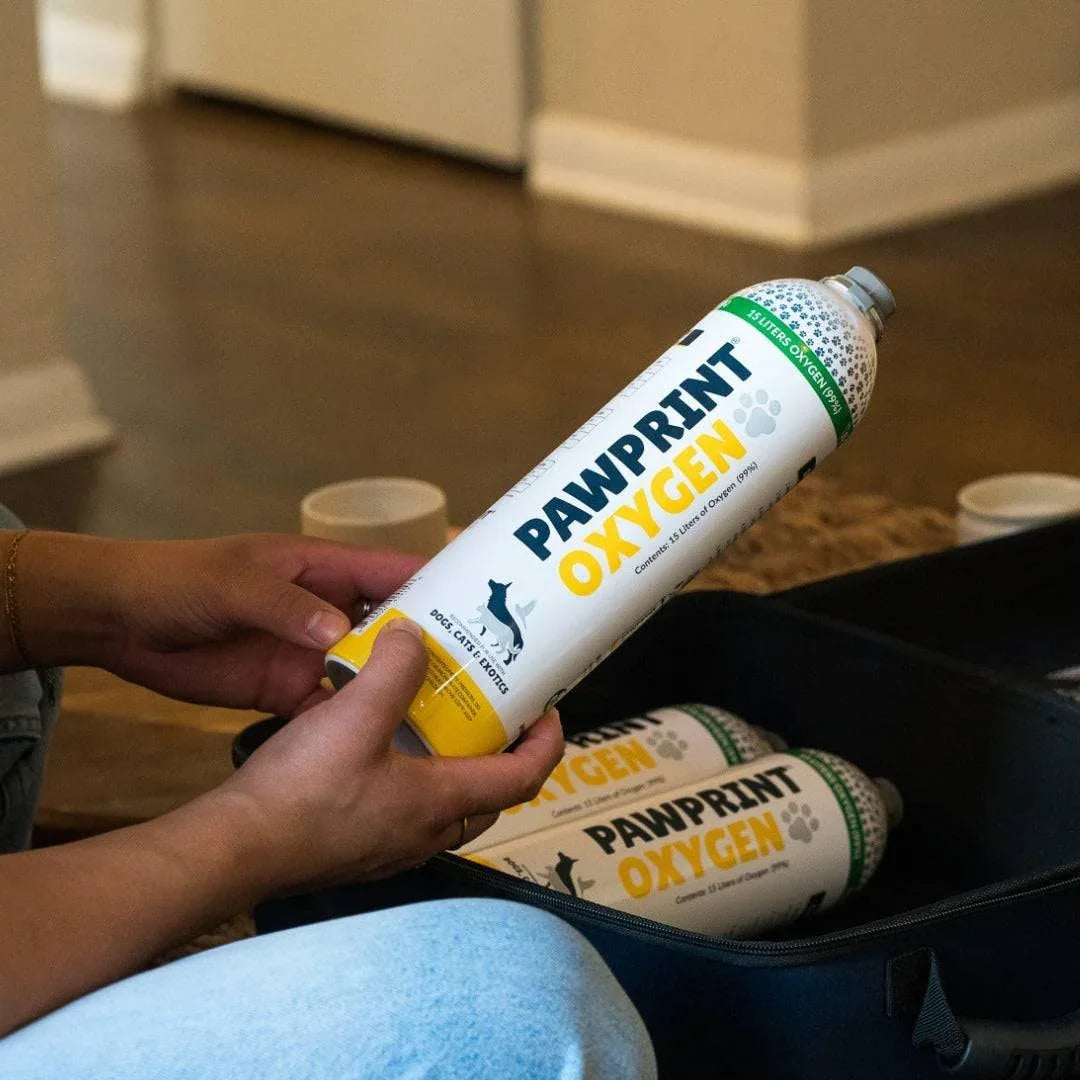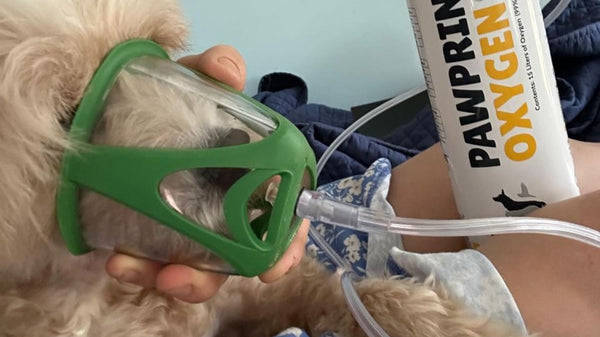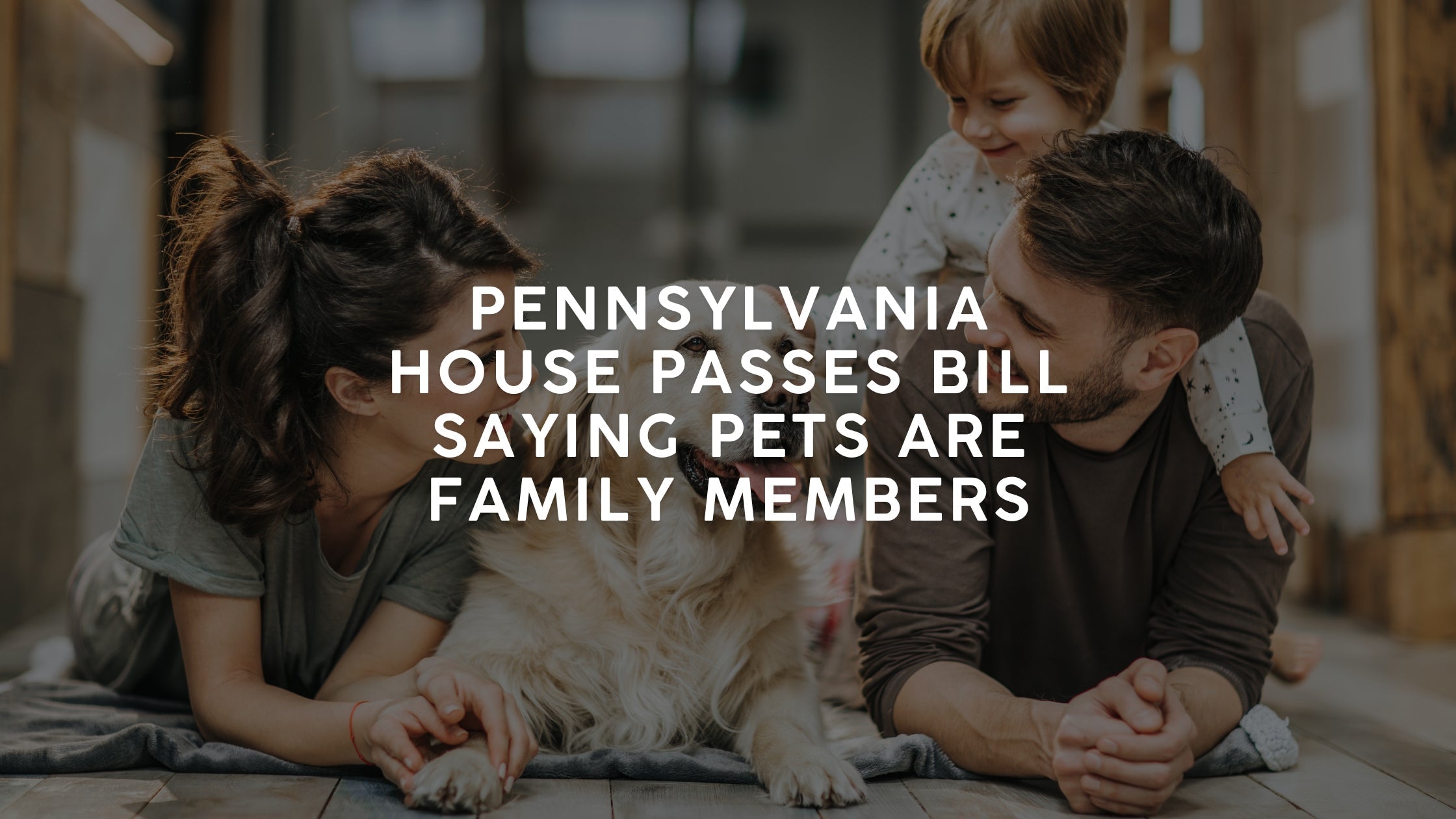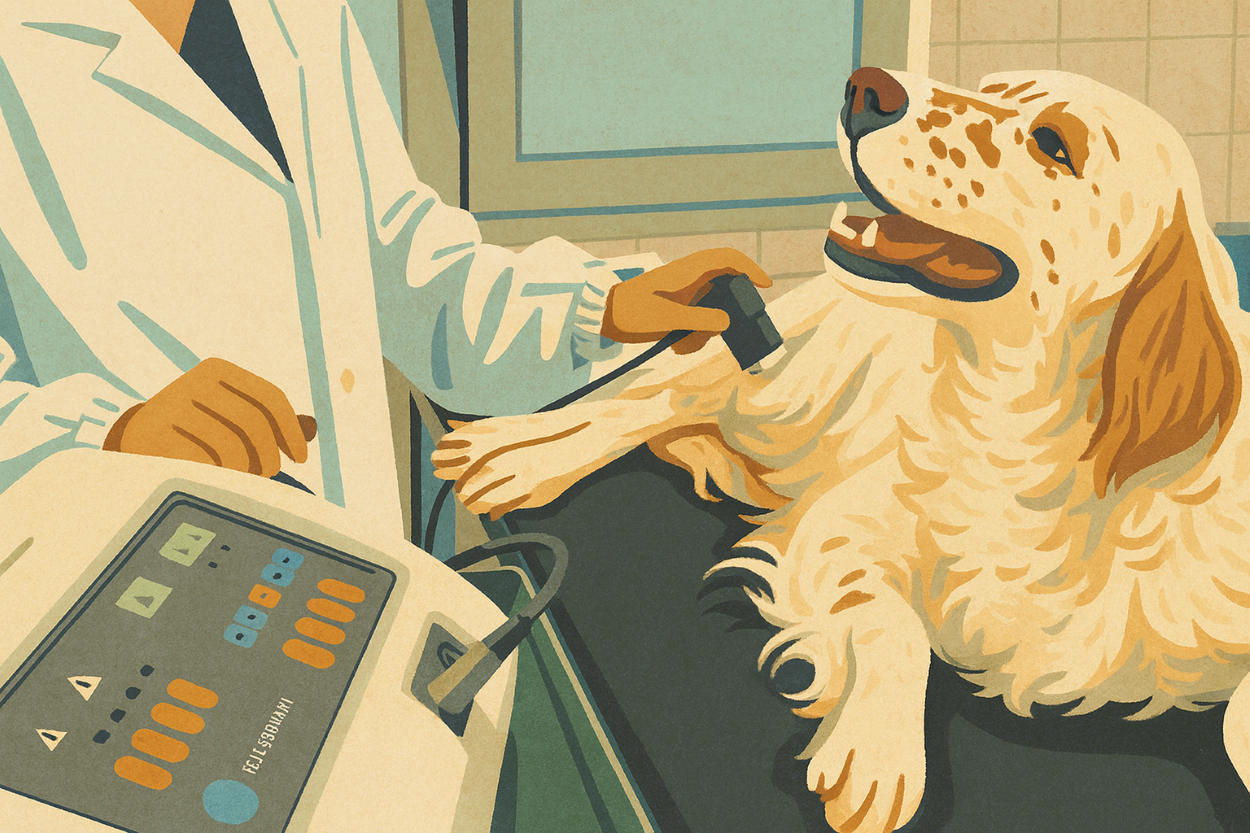Collapsed trachea is a common respiratory condition, particularly in small breed dogs, where the tracheal rings weaken and lead to airway obstruction. This condition can cause significant distress and breathing difficulties for affected pets. Oxygen therapy has emerged as a vital component in managing and alleviating the symptoms associated with a collapsed trachea.
In this article, we will explore the benefits of oxygen therapy, how it works, and what pet owners can expect when their furry friend undergoes this treatment. Our goal is to provide comprehensive information to help you understand how oxygen therapy can improve the quality of life for pets suffering from a collapsed trachea and ensure they receive the best possible care.
Table of Contents

This Article Will Help You To:
Learn about the benefits that oxygen therapy can give pets with collapsed trachea.
Understand what collapsed trachea is and how it progresses.
View oxygen therapy options and treatment paths for the condition.
Understanding Collapsed Trachea in Pets
A collapsed trachea occurs when the tracheal rings, which hold the windpipe open, begin to weaken. Since collapsed trachea is a progressive disease, over time the symptoms will worsen, leading to an increasingly narrowed airway, causing breathing difficulties. If left to advance to stage 4, there will be a complete collapse of the trachea, which can be life threatening.
Symptoms of collapsed trachea include a honking cough, wheezing, and difficulty breathing. Yorkshire Terriers, Pomeranians, Shih Tzus, Chihuahuas, and other small breeds are more susceptible to developing a collapsed trachea.
Since collapsed trachea gradually worsens over time, progression of the disease can lead to chronic coughing, exercise intolerance, and acute respiratory distress. Factors such as obesity, respiratory infections, and environmental irritants can exacerbate the condition.
Treatment focuses on managing symptoms and may include weight management, medications, and in severe cases, surgical intervention. Regular veterinary check-ups are crucial for monitoring and adjusting the treatment plan.
Are there any natural treatments that help with a collapsed trachea in dogs?
Yes, there are several natural treatments and home remedies that can help manage a collapsed trachea in dogs. While these remedies won’t cure the condition, they can help reduce symptoms like coughing, inflammation, and airway irritation. Here are some options:
1. Weight Management
- Why it helps: Extra weight puts more pressure on the trachea and worsens breathing difficulties.
- What to do: Keep your dog at a healthy weight with a balanced diet and portion control . Avoid high-calorie treats and opt for fresh vegetables like carrots or green beans.
2. Anti-Inflammatory Supplements
- Why it helps: Reducing inflammation in the trachea can ease breathing and lessen coughing.
-
Natural options:
- Turmeric – Contains curcumin, a natural anti-inflammatory. Mix a small amount into your dog’s food.
- Omega-3 fatty acids – Found in fish oil, these help reduce inflammation in the airways.
3. Honey and Herbal Remedies
- Why it helps: Honey coats the throat and may help soothe irritation, reducing coughing.
-
How to use:
- Give ½ to 1 teaspoon of raw honey up to three times daily.
- Look for honey-based herbal cough syrups with marshmallow root or slippery elm, both of which can ease throat irritation.
4. Humidifier or Steam Therapy
- Why it helps: Dry air can irritate the trachea and trigger coughing.
-
What to do:
- Use a humidifier in your dog’s sleeping area.
- Let your dog sit in a steamy bathroom for a few minutes while you run a hot shower.
5. Avoid Triggers That Worsen Coughing
-
Irritants to remove:
- Smoke (cigarette, fireplace, candles)
- Strong perfumes or air fresheners
- Household cleaners with strong fumes
6. Switching to a Harness
- Why it helps: Collars put pressure on the trachea and can make symptoms worse.
- What to do: Use a soft, padded harness instead of a collar to reduce throat strain.
7. Acupuncture and Chiropractic Care
- Why it helps: Some pet owners find that acupuncture or chiropractic adjustments improve airway function and reduce coughing.
- What to do: Seek out a licensed veterinary acupuncturist or chiropractor for guidance.
8. Oxygen Therapy at Home
- Why it helps: Providing supplemental oxygen can relieve respiratory distress during flare-ups.
- What to do: Consider portable oxygen canisters or an oxygen concentrator to have on hand for emergencies.
How can I prevent my dog from having a coughing fit from a collapsed trachea?
Preventing coughing fits in dogs with collapsed trachea requires a combination of lifestyle changes, environmental management, and supportive care . Here are some effective ways to minimize coughing episodes:
1. Minimize Tracheal Irritation
- Switch to a Harness: A collar puts pressure on the trachea and can trigger coughing. Use a soft, padded harness to reduce strain on the throat.
- Keep Your Dog Calm: Excitement or stress can lead to excessive barking or panting , which worsens coughing. Try to avoid situations that overstimulate your dog.
- Control Barking: If barking triggers coughing, use positive reinforcement training or a white noise machine to reduce triggers like outside noises.
2. Maintain a Healthy Weight
- Why it helps: Excess weight puts pressure on the trachea, making breathing harder.
- How to manage: Feed a balanced, portion-controlled diet and ensure light, low-impact exercise (like short walks).
3. Keep the Air Clean and Moisturized
- Use a Humidifier: Dry air can irritate the trachea, so keep a humidifier in your dog’s living space.
-
Avoid Irritants:
- No smoke exposure (cigarette, fireplace, candles).
- No strong perfumes, air fresheners, or household cleaners.
4. Provide Natural Soothing Remedies
- Honey: A small amount of raw honey (½ to 1 teaspoon) up to 3 times daily can help soothe the throat.
- Herbal Support: Look for natural cough syrups containing marshmallow root or slippery elm to ease airway irritation.
5. Control Temperature and Exercise
- Avoid Hot, Humid Weather: Heat and humidity can make breathing more difficult. Walk your dog during cooler parts of the day.
- No Overexertion: Keep exercise light—short walks instead of high-intensity play.
6. Use Oxygen Therapy During Flare-Ups
- Why it helps: Extra oxygen can reduce the strain on the airways and help your dog breathe more easily.
- What to do: Keep portable oxygen canisters or an oxygen concentrator on hand for emergencies.
7. Medications and Veterinary Support
- Cough Suppressants: If coughing is severe, your vet may prescribe hydrocodone or butorphanol to reduce symptoms.
- Anti-Inflammatories: Steroids (prednisone) or natural options like turmeric can reduce swelling in the trachea.
By implementing these strategies, you can reduce the frequency and severity of coughing fits and improve your dog’s quality of life.
Can a collapsed trachea get better, or will it worsen over time?
A collapsed trachea is a progressive condition, meaning it does not fully heal on its own and can worsen over time if not properly managed. However, with the right treatment, lifestyle adjustments, and medical support , many dogs can maintain a good quality of life and experience fewer symptoms.
Will a Collapsed Trachea Get Better?
- The trachea itself cannot regenerate or return to normal once it has collapsed.
- However, symptoms can improve with proper management, medications, and environmental adjustments .
- Dogs with mild to moderate cases can live comfortably with weight control, cough suppressants, anti-inflammatories, oxygen therapy, and trigger avoidance .
Can It Get Worse Over Time?
- Yes, the condition can progress , especially in senior dogs or those with severe tracheal collapse .
- Repeated inflammation and coughing can weaken the tracheal rings further, making breathing more difficult over time.
- If left unmanaged, a collapsed trachea can lead to chronic respiratory distress, frequent infections, or secondary complications like heart disease .
How to Slow Progression and Improve Comfort
- Maintain a Healthy Weight: Reduces pressure on the trachea.
- Avoid Triggers: Keep your dog away from smoke, dust, and excessive barking.
- Use a Harness: Prevents additional strain on the trachea.
- Provide Oxygen Therapy as Needed: Helps during flare-ups.
- Consider Medications or Surgery (in Severe Cases): Your vet may recommend cough suppressants, bronchodilators, or even stent placement in advanced cases.
What’s the Long-Term Outlook?
- Many dogs with mild to moderate cases can live comfortably for years with proper management .
- Dogs with severe tracheal collapse may need intensive care, oxygen therapy, or surgical intervention to maintain quality of life.
Stages of Collapsed Trachea
Collapsed trachea in dogs is typically classified into four stages, each representing the severity of the condition and the degree of tracheal collapse. Understanding these stages helps in determining the appropriate treatment and management strategies for affected pets.
Stage 1: Mild Collapsed Trachea
- Description: The trachea is slightly flattened but still maintains most of its structure.
- Symptoms: Mild coughing, especially when excited or after physical activity. The dog may show minimal signs of discomfort.
- Treatment: Often managed with lifestyle changes, such as weight management and avoiding triggers that induce coughing. Anti-inflammatory medications may be prescribed.
Stage 2: Moderate Collapsed Trachea
- Description: The tracheal rings are more flattened, causing a noticeable narrowing of the airway.
- Symptoms: Frequent coughing, gagging, and possible exercise intolerance. Breathing may be more labored, especially during exertion.
- Treatment: Along with lifestyle modifications, bronchodilators, supplemental oxygen, and cough suppressants may be used. Anti-inflammatory medications and possibly antibiotics if a secondary infection is present.
Stage 3: Severe Collapsed Trachea
- Description: The trachea is significantly flattened, resulting in a pronounced narrowing of the airway.
- Symptoms: Persistent, harsh coughing, increased difficulty breathing, wheezing sounds, and signs of respiratory distress, particularly during exercise or excitement.
- Treatment: In addition to medications, oxygen therapy is crucial to alleviating these more severe symptoms. More aggressive medical management and possible surgical intervention may be considered.
Stage 4: Very Severe Collapsed Trachea
- Description: The trachea is almost completely flattened, severely restricting airflow.
- Symptoms: Constant coughing, severe respiratory distress, cyanosis (bluish tint to gums and tongue due to lack of oxygen), and collapse or fainting during episodes of distress.
- Treatment: Intensive medical management including continuous oxygen therapy, possible stent placement to keep the airway open, and in some cases, emergency surgical intervention. Regular veterinary monitoring is critical.
Early detection and management of tracheal collapse can significantly improve the quality of life for affected dogs. Regular veterinary check-ups and prompt attention to respiratory symptoms are essential for maintaining the health and well-being of dogs with this condition.
The Role of Oxygen Therapy for Pets with Collapsed Trachea
Oxygen therapy plays a crucial role in managing dogs diagnosed with collapsed trachea, particularly in moderate to severe cases where breathing difficulties are pronounced. The primary function of oxygen therapy is to ensure that the dog receives an adequate supply of oxygen, alleviating respiratory distress and improving overall comfort. Here’s a detailed look at the role of oxygen therapy in these cases:
Alleviating Respiratory Distress
Dogs with a collapsed trachea often struggle to breathe due to the restricted airflow. Oxygen therapy provides a higher concentration of oxygen than is available in the surrounding air, helping to ease the breathing process and reduce the effort required to inhale.
Reducing Symptoms
Oxygen therapy can significantly reduce symptoms such as coughing, wheezing, and cyanosis (bluish tint to the gums and tongue). By improving oxygen saturation in the blood, the therapy helps in minimizing these distressing symptoms and enhancing the dog’s quality of life.
Emergency Situations
In acute episodes of respiratory distress or collapse, oxygen therapy can be crucial. It provides immediate relief by increasing the amount of oxygen in the bloodstream, which is critical during severe respiratory episodes.
Supporting Medical Treatments
Oxygen therapy is often used in conjunction with other treatments such as bronchodilators, anti-inflammatory medications, and cough suppressants. By stabilizing the dog’s condition and improving oxygen levels, it enhances the effectiveness of these medications and supports overall treatment goals.
Post-Surgical Care
For dogs that undergo surgical interventions, such as stent placement to keep the airway open, oxygen therapy is often an essential part of post-operative care. It helps in recovery by ensuring adequate oxygenation while the dog heals.
Chronic Management
For dogs with advanced stages of collapsed trachea, ongoing oxygen therapy may be part of a chronic management plan. Portable oxygen canisters can be used on-the-go to provide continuous or intermittent oxygen support as needed.
Comfort and Quality of Life
Overall, oxygen therapy greatly contributes to the comfort and well-being of dogs with collapsed trachea. By reducing the symptoms and easing the breathing process, it allows the dog to engage in daily activities with less discomfort and stress. Oxygen therapy is a vital component in the management of collapsed trachea in dogs, providing relief from respiratory distress, supporting other treatments, and significantly improving the quality of life for affected pets.
Other Treatment Options and Lifestyle Adjustments
While oxygen therapy is crucial, it is often part of a broader treatment plan for collapsed trachea that includes medications like cough suppressants and corticosteroids, or even surgery in severe cases. Lifestyle adjustments, such as using a harness instead of a neck collar, are recommended to reduce pressure on the trachea.
Veterinarians often prescribe several types of medications to manage the symptoms of collapsed trachea in dogs. These medications aim to reduce inflammation, suppress coughing, manage anxiety, and treat any concurrent infections.
Oxygen Therapy Products for Pets with Collapsed Trachea
Below you'll find the following options pet parents utilize for pets with collapsed trachea. Typically, pets experiencing symptomatic episodes will use the portable oxygen kits while pets who need daily, longer treatment cycles will use the oxygen chamber and concentrator set-up for more prolonged oxygen treatment of collapsed trachea.
Oxygen Chamber
An oxygen chamber provides a controlled environment where the oxygen concentration can be precisely regulated. This ensures that the dog receives a consistent and appropriate level of oxygen, which is crucial for alleviating respiratory distress caused from collapsed trachea.
Oxygen chambers offer continuous oxygen supply. This is particularly beneficial for dogs that require long-term or ongoing oxygen therapy, ensuring they receive adequate oxygenation whenever needed.
Oxygen Concentrator
Oxygen concentrators provide a continuous and reliable supply of oxygen by extracting and concentrating oxygen from the ambient air. This ensures that the dog receives a steady flow of oxygen, which is crucial for alleviating respiratory distress.
Unlike oxygen tanks or portable oxygen canisters, which need to be refilled or replaced regularly, oxygen concentrators use the surrounding air to produce oxygen, making them a more cost-effective solution in the long run. This is especially beneficial for dogs requiring long-term oxygen therapy.
Oxygen Mask
The PureVent pet oxygen mask is placed over the pet's nose and mouth. The mask is then connected to an oxygen supply like portable oxygen canisters or a concentrator. Oxygen masks are typically used more frequently for transport for dogs with collapsed trachea.
Oxygen Canisters
Portable oxygen canisters can be used to provide oxygen to the pet when traveling or when the pet is outside of the home. Canisters are used in conjunctions with a regulator and pet oxygen mask to create a specific flow rate that fits the pet's weight and breed.
In cases of sudden respiratory distress, portable oxygen canisters provide immediate access to oxygen. This quick response can be crucial in stabilizing the dog’s condition and preventing further complications during acute episodes.
Unlike oxygen concentrators, portable oxygen canisters do not require electricity to function. This makes them especially useful in situations where power supply is unavailable or unreliable, ensuring that the dog can still receive the necessary oxygen therapy.

PureVent 5L Medical-Grade Oxygen Concentrator
The PureVent 5L Oxygen Concentrator plugs into a wall outlet (120V) and concentrates oxygen from room air, providing high purity oxygen gas (>90%). The oxygen concentrator provides an endless supply of continuous flow oxygen therapy and is recommended for pets requiring extended oxygen therapy (more than one hour per day). This may be a good option for dogs with collapsed trachea who are experiencing more severe symptoms. Use the oxygen concentrator with a PureVent Pet Oxygen Mask or an oxygen chamber.
Oxygen Therapy: An Invaluable Tool for Dogs with Collapsed Trachea
Oxygen therapy is an invaluable tool in the management of pets with collapsed trachea, offering significant relief and improving their quality of life. By providing a consistent and adequate supply of oxygen, this therapy helps to alleviate respiratory distress, reduce symptoms, and support overall well-being.
Whether administered through oxygen chambers, concentrators, or portable canisters, oxygen therapy ensures that pets receive the necessary respiratory support in various situations and environments after receiving a collapsed trachea diagnosis. Understanding the benefits and options available for oxygen therapy empowers pet owners to make informed decisions and take proactive steps in the care of their beloved companions. With the right treatment and management, pets with collapsed trachea can lead more comfortable and fulfilling lives, breathing easier with the help of oxygen therapy.

